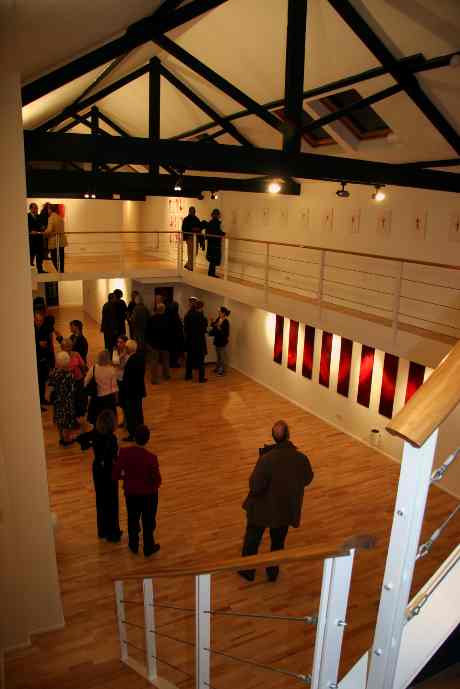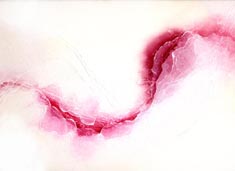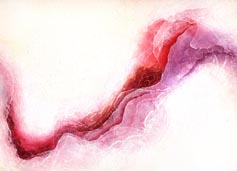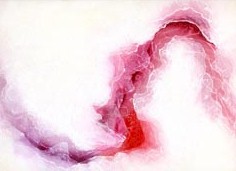

6
– 13 December 2007 (noon – 6pm)
The
Cello Factory
33-34 Cornwall Road
London
SE1 8TJ
View
by appointment from 14 to end December
"In that part of the book of my memory before which little can be read, there is a heading, which says: ‘Incipit vita nova: Here begins the new life’."
--Dante Alighieri
Click on images to enlarge
Susan
Haire, painter, and
 This
collaboration is a response to Dante's La vita nuova, a unique
combination of poetry and narrative. In it, Dante uses both vehicles to describe
his reaction to Beatrice Portinari, with whom he barely spoke. Although he fell
obsessively in love with her in the course of his youth and early manhood, he
regarded her as upholding all that is good and blessed –
beata – as in her name. He was quite self-conscious about the effect of
this feeling towards her not only upon his emotions, but also on his view of
life, his quest for purity and beauty. This was his new life and its resulting
change of course led, before too long, to The Divine Comedy.
This
collaboration is a response to Dante's La vita nuova, a unique
combination of poetry and narrative. In it, Dante uses both vehicles to describe
his reaction to Beatrice Portinari, with whom he barely spoke. Although he fell
obsessively in love with her in the course of his youth and early manhood, he
regarded her as upholding all that is good and blessed –
beata – as in her name. He was quite self-conscious about the effect of
this feeling towards her not only upon his emotions, but also on his view of
life, his quest for purity and beauty. This was his new life and its resulting
change of course led, before too long, to The Divine Comedy.
Dydo
and Haire were introduced to La vita nuova through their involvement with
Rebus Touring Arts' multi-disciplined performance
project (involving theatre, film, dance, music and painting). The play, by Alison
Atkinson, explores Dante's transformation during his youthful love for
Beatrice. In the most
significant and powerfully graphic parts of La vita nuova, Dante
describes the visions he has when Love, whom he has personified, speaks to him
and advises him. In the Rebus production, dancers represent Love, and Haire
embraces this and paints the dance as repeated curving forms on individual
panels, celebrating “the new life.” She creates myriad layers and a mesh of
fine lines made with white paint drawn with a medicine dropper. These layers
conceal and expose rich pinks and reds, some delicate and fragile and others
with a more raw quality, the latter in response to the famous words in one of
Dante’s visions, "Vide cor tuum" ("behold your
heart").
The
music explores the layering of the images with its own layers of sound, all
interacting within the space; the sound source for each picture
projects its own characterization of the whole. The contrapuntal layers of music
in the acoustical space reflect the layering of colors in the paintings. At the
same time, there are layers of a different kind, with computer-generated sounds
interacting with instrumental ones, and with contemporary harmonies reacting to
fragments of trecento melodies.
Supported by
|
|



